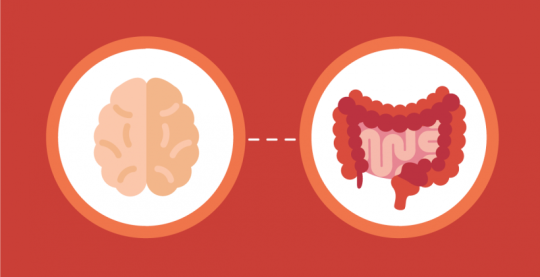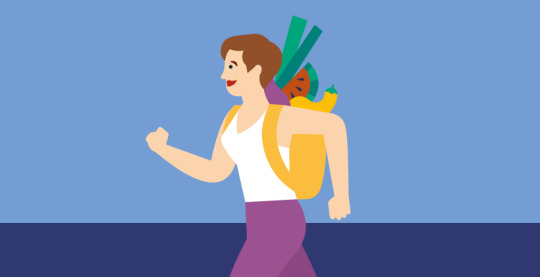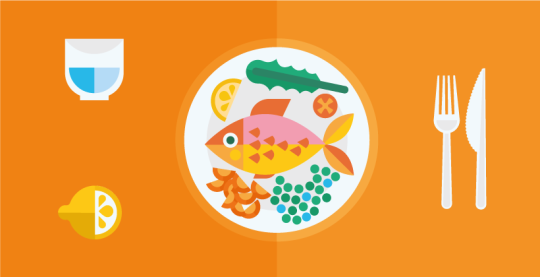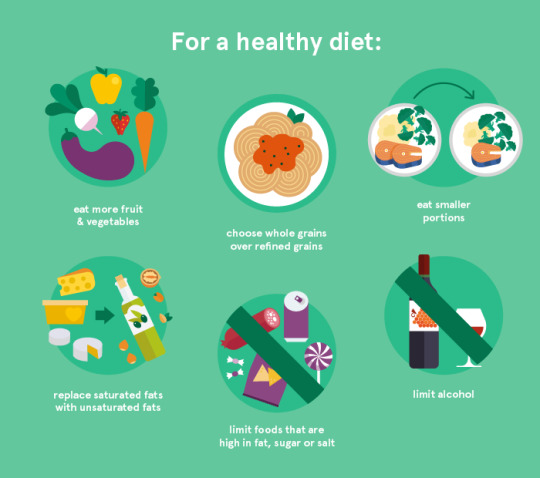Female | 20 | I'm A Total Trash Mammal | BTS A.R.M.Y See more ideas about Style, Healthy body inspiration, Cute Outfits.
Don't wanna be here? Send us removal request.
Text
Mind vs stomach? Food perceptions may also influence hunger and fullness

An examination distributed online in front of print in the diary Health Psychology found that when individuals with various mentalities drank indistinguishable milkshakes, they encountered various degrees of satiety. Scientists presumed that individuals' food discernments may impact hormonal guideline of appetite and completion, past the natural supplements of the food on the plate.
Researchers from Yale University and Arizona State University, USA, set out to watch the intensity of convictions on craving. To accomplish this, they asked 46 sound people to drink milkshakes marked as "620-kcal liberal" or "140-kcal reasonable." Participants evaluated the taste and name of the milkshakes, and announced their abstract sentiments of completion. To quantify physiological totality, blood tests were drawn previously, during, and after the milkshake, and were dissected for changes in ghrelin. Ghrelin is a gut hormone that transports hunger messages between the stomach and the mind; ghrelin levels increment without food, and lessening when food enters the stomach.
Here is the intriguing piece: obscure to the members, underneath the marks, both the "liberal" and "reasonable" milkshakes contained 380-kcal. Much increasingly charming, the scientists found that unpretentious changes in drinking attitude modified ghrelin levels, autonomous of the indistinguishable healthful substance. When drinking the "liberal" milkshake, members experienced more satiety, reflected by a more keen reduction in ghrelin levels. In examination, drinking the "reasonable" shake brought about a less articulated ghrelin reaction, proposing that in spite of drinking similar supplements, "reasonable" food recognitions left the members less physiologically fulfilled.
These perceptions are significant, given that ghrelin guideline is basic for weight support. Past research has associated high ghrelin levels with expanded food utilization and weight increase, and there is a developing enthusiasm for the pharmacological utilization of gut hormones for weight reduction. On a basic level, the ascent and fall of ghrelin should supplement the stomach's gathering of food, anyway this investigation affirms that correspondence among stomach and mind isn't clear.
The investigation had a few restrictions, in particular the little example size, and absence of control gathering to normalize the strategy. In any case, further research is expected to comprehend ghrelin's component of activity, and investigate the intensity of the psyche on craving.
For functional application, can the impact of food discernments be utilized to advance good dieting practices? The creators propose, "Maybe on the off chance that we can start to approach even the most advantageous nourishments with a mentality of extravagance, we will encounter the physiological fulfillment of having had our cake and eaten it as well."
1 note
·
View note
Text
Stress and food intake

A few people eat less and others more than ordinary because of stress. Creative methods of handling pressure related eating conduct may assist individuals with controlling weight and lessen basic pressure.
Intense versus interminable pressure
At the point when we see a prompt danger (intense pressure), the cerebrum imparts a sign to various frameworks including the hypothalamic-pituitary-adrenal (HPA) framework, and actuates pressure hormones. This initiation triggers a course of occasions to set up the body for activity. For instance glucose is activated to fuel the muscles and cerebrum, the faculties are increased, the heart works quicker, and breathing animates. This is normally known as the "battle or flight" reaction, it developed as an endurance instrument - empowering us to respond rapidly to perilous occasions.
In a solid pressure reaction, levels of pressure hormones, for example, adrenalin and cortisol ascend to satisfy the needs of the circumstance and afterward fall quickly once it is managed. In ceaseless worry there is a drawn out presentation to stretch hormones, especially cortisol, and the body may not come back to homeostasis (a solid resting state). This can have genuine wellbeing results and unfavorably influence the invulnerable, cardiovascular and focal sensory systems.
Stress and eating conduct
In intense elevated level pressure, for example, under a genuine physical danger, the hunger is suppressed.1 However, less extreme yet progressively long haul pressure, similar to work pressure, can influence eating conduct in various ways. It is assessed that around 30% eat not exactly ordinary when pushed, while most people eat more.2 The HPA stress reaction framework, which has indistinguishable neural pathways from the control of food consumption, is believed to be integral to clarifying both under-and over-eating.2
Singular reactions
In light of pressure, rodents given standard chow eat less and get thinner. Anyway rodents eat more when presented to acceptable nourishments as opposed to standard chow, which proposes that pleasurable food sources could help reduce the side effects of pressure.
People are routinely presented to pleasurable nourishments. A few people use food as an approach to calm pressure and counter pessimistic passionate states, while others don't. In individuals who carefully control their food consumption (controlled eater or calorie counter), stress can abrogate their cognizant control, prompting indulging of 'limited foods'.1 There are likewise contrasts in individuals' capacity to separate among hunger and other terrible inner states like stress.3 It is proposed that maybe the individuals who are more 'tuned in' to their craving and digestion are the ones who eat less because of stress.3
Stress and body shape
Solid people who show expanded cortisol reactivity in light of worry (in research center investigations) have more prominent stomach weight, as do people with higher morning cortisol levels (a side effect of occupation and life stress), contrasted with controls.2 Low financial status and employment pressures, two pointers of constant pressure, have been related with more noteworthy degrees of stomach obesity.4 It is proposed that incessantly high cortisol levels in cooperative energy with significant levels of insulin (a hormone that enables the body to utilize glucose) energizes fat statement around the waist.2 However not all examinations discover a connection among stress and in general stoutness levels.5
A careful methodology
Care programs for pressure decrease have been around for quite a while, and all the more as of late have been applied to control scattered eating. They use methods which hinder constant idea examples, feelings and practices, and upgrade consciousness of contemplations, sentiments, and tangible experiences.3 This methodology assists individuals with connecting with their inward signals (perceiving appetite and completion, feelings and outside prompts), instead of depending on learned reactions. An ongoing writing audit of care programs found that 86% of studies announced upgrades in focused eating behaviours.6 This methodology may not just improve food decisions and help control weight, however diminish basic worry also.
1 note
·
View note
Text
Mindless to mindful eating
Eating carelessly might be adding to the ever-growing waistlines over the globe. Examination into careful eating has to a great extent concentrated on weight control and helping individuals to build up a superior relationship with food. How might you eat all the more carefully?

Careless eating
A logical survey found that individuals who were given bigger food bundles, greater café partitions, and bigger measured plates and bowls, ate a normal of 30% more food on that event, contrasted with individuals who were given littler sizes.1 However, over 70% of individuals accepted they had eaten a similar sum as they ordinarily ate, and 94% immovably accepted that they were not impacted by the bundle, bit or plate size. The discoveries from this audit propose that outer elements can make individuals mindlessly.1
In like manner, an ongoing meta-examination found that eating while at the same time being diverted, for example, staring at the TV or playing a PC game, prompts more noteworthy intense food intake.2 It might be that the interruption removes the impression of food properties, for example, flavor, surface and appearance, which postpones the beginning of the sentiment of "having enough" that triggers an individual to quit eating. Diverted eating may meddle with memory of late food consumption, and can likewise prompt increments in resulting snacking.2,3 By differentiate, diverting consideration regarding the food while eating diminished the measure of ensuing eating in lean youthful women.3 This proposes focusing on what we eat, for example careful eating, might be helpful in lessening coincidental overconsumption.
Careful eating
Care is purposely focusing on the current second without judgment. It mirrors an old Buddhist contemplation practice.4 Mindful eating just methods being mindfully mindful while eating. This involves: concentrating on the tangible properties of the food, for example, the taste, smell and surface, recognizing abstract reactions to eating a food, for example, different preferences, and focusing on interior signals of craving and satiety.5 Mindful eating urges the body to follow its own internal astuteness to pick nourishments that are both fulfilling, agreeable and feeding.
Thoughtless to careful
There is an expanding number of studies analyzing the effect of care on a scope of wellbeing and way of life issues including injurious eating practices (for example sporadic eating designs, enthusiastic eating) and weight control. An audit of 21 investigations of care based intercessions to change heftiness related eating practices found that 86% of the examinations detailed enhancements in eating conduct, dietary admission and body weight.6 Another survey, concentrating on weight reduction, found that six out of eight transient mediation contemplates reported huge weight reduction among individuals eating mindfully.4 There is likewise encouraging work that proposes that careful eating can help forestall accidental or thoughtless gorging by individuals with a solid weight.2,3 Mindful eating has additionally been compelling in self-administration of diabetes.7 However, longer term considers are expected to check whether the impacts are enduring. It is recommended that careful eating expands consciousness of appetite and satiety signals, intruding on constant and stress-related eating designs and improving control of food intake.6 Further work is expected to comprehend the mental, conduct, and natural components supporting the procedure, and the most reliably compelling interventions.4
Since food decision is intricate and might be outside of cognizant mindfulness, a few researchers accept that mindfulness and instruction isn't sufficient to change careless eating.1 However individuals may profit by following proposals to help them carefully eat better.8,9
Tips for eating more mindfully8,9
Prior to opening the cooler or pantry, slowly inhale and ask yourself how you feel. Is it true that you are extremely eager? Or then again parched? Pushed? Exhausted? Think for a moment and separate between your requirements and needs.
On the off chance that you don't have to eat, accomplish something different like take a short walk.
Try not to eat in a hurry - it's hard to know about the amount you are eating. Take a load off.
Oppose eating directly from the pack/box. Serve your food – you'll have the option to see and acknowledge what and the amount you're eating.
Utilize littler plates which could enable your bit to control.
Expel interruptions. Mood killer the TV and everything else with a screen, similar to PCs, telephones, and so forth.
Set a clock, permit yourself 20 minutes to eat a supper.
Eat quietly for five minutes, pondering what it took to deliver that feast, from the sun's beams to the rancher to the shop to the cook.
Have a go at eating with your non-prevailing hand, or with chopsticks, to accomplish eating gradually.
Take little nibbles and bite well, while concentrating on the smell, taste and surface of the food. Attempt to get 30 reprimanded of each nibble.
Have a go at putting your utensils down after each nibble. Try not to pick them back up until you've gulped what you as of now have in your mouth.
Try not to attempt to complete the entire plate. On the off chance that you feel full, securely keep the food extra. In an eatery, request 'doggy sack' to remove.
References
Wansink B (2010). From thoughtless eating to carelessly eating better. Physiology and Behavior 100:454-463.
Robinson E, et al. (2013). Eating mindfully: an orderly survey and meta-investigation of the impact of food admission memory and mindfulness on eating. American Journal of Clinical Nutrition 97(4):728-742.
Higgs S (2015). Controls of consideration during eating and their impacts on later nibble consumption. Craving 92:287-294.
Olson KL and Emery CF (2015). Care and weight reduction: An orderly audit. Psychosomatic Medicine 77(1):59-67.
The Center for Mindful Eating. Standards of careful eating. Gotten to 02 September 2015.
O'Reilly GA, et al. (2014). Care based intercessions for stoutness related eating practices: a writing audit. Weight Reviews 15:453-461
Mill operator C, et al. (2013). Examination of a careful eating mediation to a diabetes self-administration intercession among grown-ups with type 2 diabetes: A randomized controlled preliminary. Wellbeing Education Behavior 41(2):145-154.
Harvard Health Publications (2011). Careful eating.
Harvard Health Publications (November, 2015). 10 Tips for Mindful Eating-in the nick of time for these special seasons.
2 notes
·
View notes
Video
youtube
We may want to lose weight, get fit, or just be healthier. We know that more fruit and vegetables or more exercising is good for us but maintaining the motivation and sticking to decisions may seem hard. There are ways to make the healthy way the easy way. Have a look at these tips to change the habits towards a healthier lifestyle. Not everything works for everyone, so pick the ones that fit you. And start changing today!
Pick one or all, whatever works for you:
Set goals and make them specific
Reflect, it helps to clearly see how to reach a goal
Plan your meals or workouts, then you are more likely to do them
Use small tricks to make it easier
Take small steps, they will lead to big changes
Get support, bring your family and friends on board
Chose the activity that you will enjoy, the one that makes you want to move
Monitor your progress
Reward yourself whenever a milestone is reached
Start today!
0 notes
Text
9 tips to eat healthy during quarantine or isolation (COVID-19)

Basically, there are no nourishments that will 'support' our safe framework and forestall or treat COVID-19. Nonetheless, eating a solid adjusted eating regimen is as yet fundamental for good wellbeing and typical insusceptible capacity. Thusly, following your nation's dietary rules is as yet the prescribed method to meet your supplement needs and keep you solid during seclusion. Here we will talk about the standards of smart dieting during isolate. You may likewise be keen on 7 hints to keep solid while in seclusion or isolate (COVID-19) and Food and coronavirus (COVID-19): what you have to know.
Eat a lot of products of the soil
Pick entire grains over refined grains
Supplant soaked with unsaturated fat
Breaking point nourishments and savors high fat, sugar and salt
Control partition sizes
Pick both plant and creature based proteins
Remain hydrated
Get your portion of nutrient D in detachment
Remain safe while food shopping
0 notes
Text
How to keep healthy while in isolation or quarantine (COVID-19)

Regardless of whether you are in isolate or self-separation due to COVID-19, you will unavoidably be investing more energy at home. Following general solid living counsel, for example, eating a decent eating routine, remaining hydrated, being genuinely dynamic, getting enough rest, and overseeing pressure are the best proposal for remaining sound during isolate or self-separation. In the event that you are keen on food-related issues with COVID-19, read Food and coronavirus (COVID-19): what you have to know
Eat a balanced and varied diet
Establish a routine and practice mindful eating
Keep hydrated
Practice safe food hygiene
Stay active at home
Get enough quality sleep
Get information from trustworthy sources
0 notes
Text
10 Healthy Lifestyle Tips for Adults
Eat a variety of foods
Base your diet on plenty of foods rich in carbohydrates
Replace saturated with unsaturated fat
Enjoy plenty of fruits and vegetables
Reduce salt and sugar intake
Eat regularly, control the portion size
Drink plenty of fluids
Maintain a healthy body weight
Get on the move, make it a habit!
Start now! And keep changing gradually.
6 notes
·
View notes
Link
1-CUTE BLOUSE + JEANS + HEELS

2-SLIP DRESS + SLIDES

MIDI SKIRT + TANK TOP + SANDALS

PUFF-SLEEVE DRESS + MULES

....
0 notes
Video
youtube
In this outfit video, I go all out and try on 50 (yes FIFTY) different creative outfits for when you have nothing to wear. Winter outfits, spring outfits, colorful outfits, monochrome outfits, we got it all, folks. Interspersed are some outfit 101 tips on styling jeans and a t-shirt, pattern mixing, transforming your dress into a shirt, wearing oversized thrift store clothes, and making a top out of a silk scarf.
2 notes
·
View notes
Photo

Our emotional support hero—
i had to tag people but tumblr isn’t letting me,,, hhh forgive me fhhdhfg,,,
Source: pumpkin-demon
10 notes
·
View notes